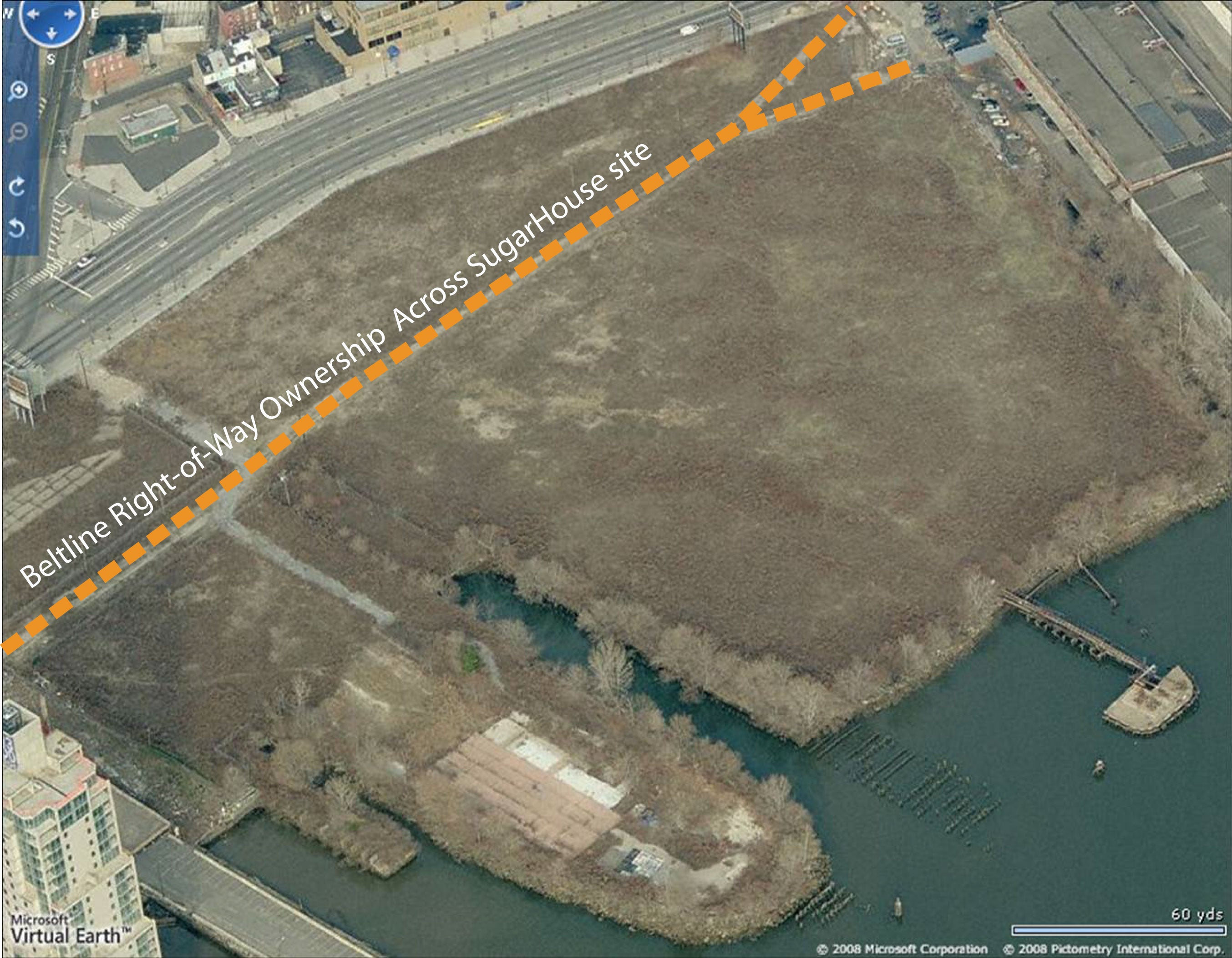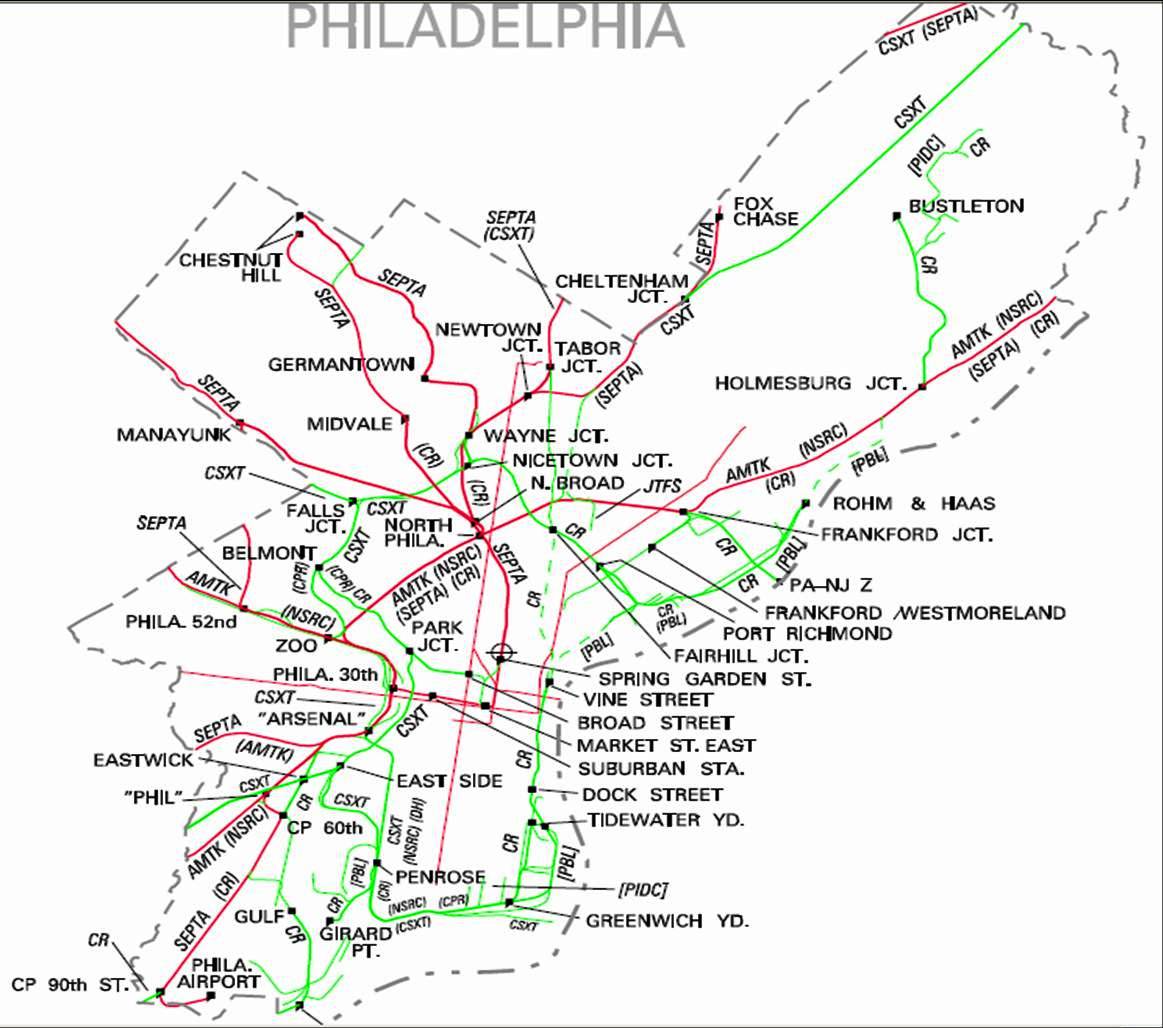Belt Line sues SugarHouse

July 14
By Kellie Patrick Gates
For PlanPhilly
An obscure Philadelphia railroad company wants to keep SugarHouse Casino from building “on or near” a right-of-way the city gave to the railroad in 1890.
The Philadelphia Belt Line Railroad Company filed a lawsuit against HSP Gaming – the SugarHouse developer – in the Philadelphia Court of Common Pleas earlier this year. An initial hearing in the case is scheduled to come before Judge Sandra M. Moss in September. A non-jury trial date has been set for November after SugarHouse’s motion for “extraordinary relief” was denied by Moss.
Court documents say SugarHouse “has no right to build its casino on the property in question.”
PBR has asked the Court to affirm that the railroad company has a right of way “ in the bed of what was formerly Penn Street, in the vicinity of the area between Shackamaxon Street and Ellen Street” and to stop SugarHouse “from taking any action to interfere, block, obstruct or otherwise prevent Plantiff from exercising now or in the future its rights to utilize said right of way.”

The railroad, which has been around since 1889, never operated trains itself. According to the website of the American Shortline and Regional Railroad Association, the PBR was “founded to allow access to the Port of Philadelphia by any railroad that wanted to come into Philadelphia.”
The company, a consortium of railroads, carried trains all the way to the Navy Yard. According to Adam Krom, a transportation planner at the Philadelphia office of the design firm Wallace Roberts & Todd, the waterfront was “sort of neutral territory for all the railroads, so the shipper could choose which one it wanted to use. The Belt Line allowed for interchanging among the different railroads.”
While the lawsuit asks that the Casino be prevented from doing anything that would obstruct the right-of-way, it also says that PBR officials had talked to SugarHouse in late 2007 and early 2008 about the possibility of abandoning the right-of-way in exchange for compensation.
“During these discussions, representatives from HSP claimed the Belt Line’s right of way did not exist in Penn Street, and that PBL’s property interest did not exist in the proposed area where the casino is to be built,” the suit states. It also says that SugarHouse knows the railroad owns the right-of-way, because a 2006 consolodation plan of the site refers to it.
SugarHouse spokeswoman Leigh Whitaker would not discuss the case. “We decline to comment on matters which are the subject of pending litigation,” she wrote in an email.
A call to the Railroad seeking comment was referred to President Charles E. Mather III, who was not available Tuesday afternoon. John B. Taulane II, an attorney representing the railroad, also could not be reached.
In 2008, Bob Turner, a consultant for the Belt Line, explained that it was chartered in 1889 “to break up the monopoly of the Pennsylvania Railroad, which controlled the Philadelphia waterfront.” The Belt Line brought in the Baltimore & Ohio and other companies “to make sure the waterfront was open to competitive rail service.”
The Penn Street section of the Delaware Avenue site has received attention in the past from archaeologists and local historians who believe artifacts from early in Philadelphia’s history. SugarHouse officials have said they will dig beneath the street after utilities are shut off. There are no trains running on the property anymore.
Contact the reporter at kelliespatrick@gmail.com
WHYY is your source for fact-based, in-depth journalism and information. As a nonprofit organization, we rely on financial support from readers like you. Please give today.



